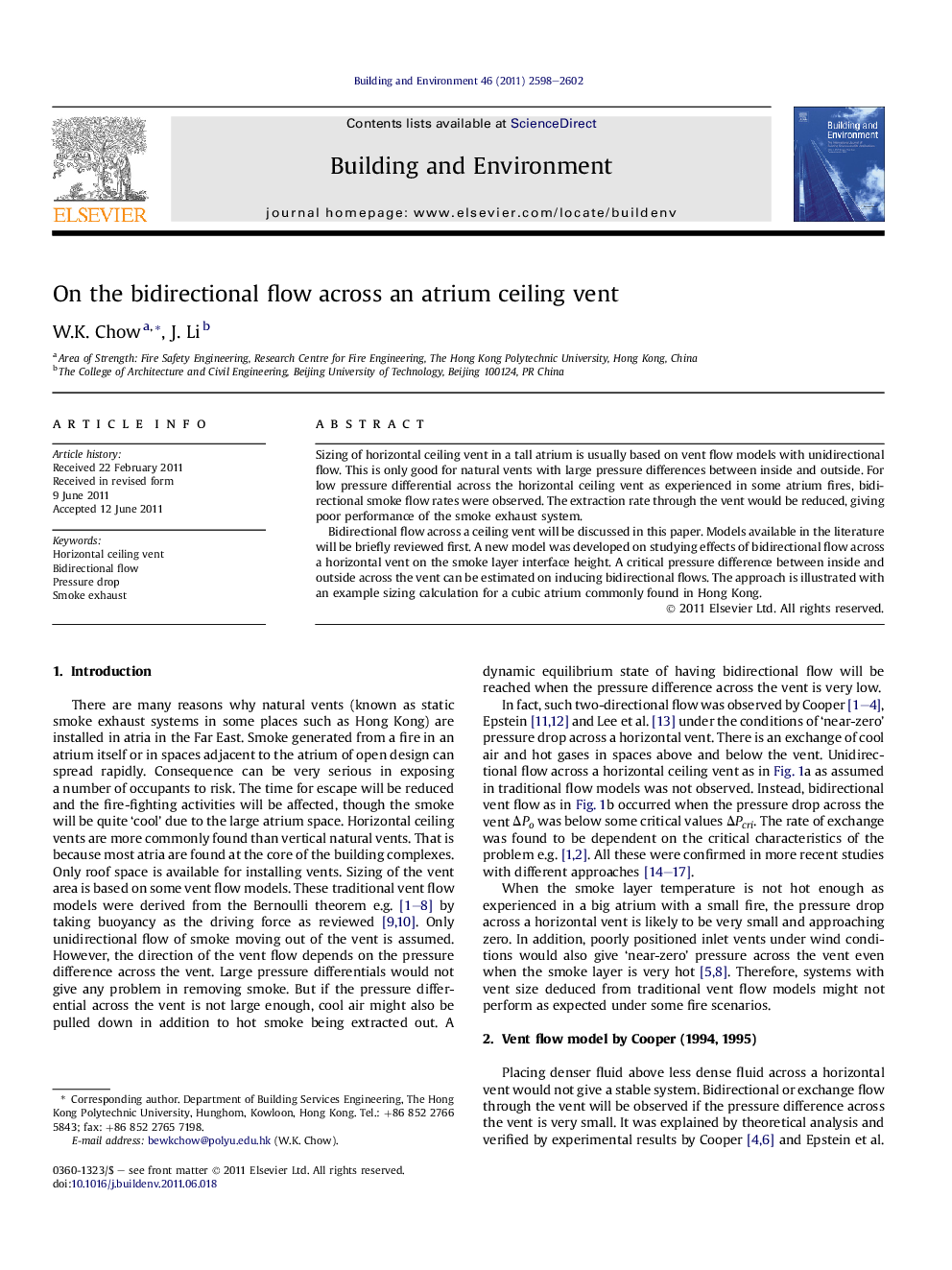| Article ID | Journal | Published Year | Pages | File Type |
|---|---|---|---|---|
| 248682 | Building and Environment | 2011 | 5 Pages |
Sizing of horizontal ceiling vent in a tall atrium is usually based on vent flow models with unidirectional flow. This is only good for natural vents with large pressure differences between inside and outside. For low pressure differential across the horizontal ceiling vent as experienced in some atrium fires, bidirectional smoke flow rates were observed. The extraction rate through the vent would be reduced, giving poor performance of the smoke exhaust system.Bidirectional flow across a ceiling vent will be discussed in this paper. Models available in the literature will be briefly reviewed first. A new model was developed on studying effects of bidirectional flow across a horizontal vent on the smoke layer interface height. A critical pressure difference between inside and outside across the vent can be estimated on inducing bidirectional flows. The approach is illustrated with an example sizing calculation for a cubic atrium commonly found in Hong Kong.
► Horizontal ceiling vents are commonly installed in the Far East following some regulations. ► Bidirectional flow across a ceiling vent was discussed in this paper. ► A new model was developed to study the effect of bidirectional flow across a horizontal vent on smoke layer thickness. ► The associated critical smoke layer interface height can also be calculated. ► The operation time of the horizontal vent should be watched carefully, especially under wind action.
